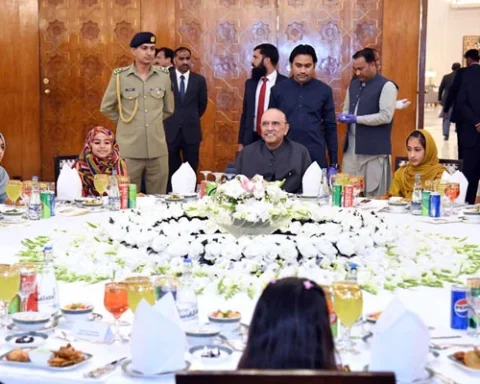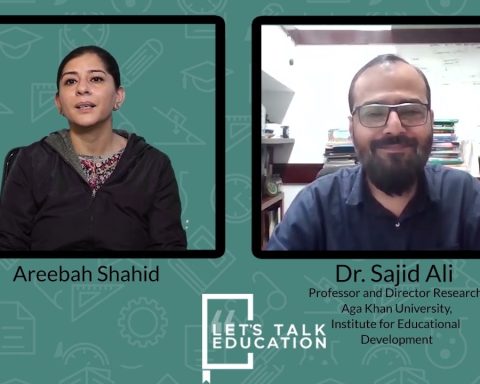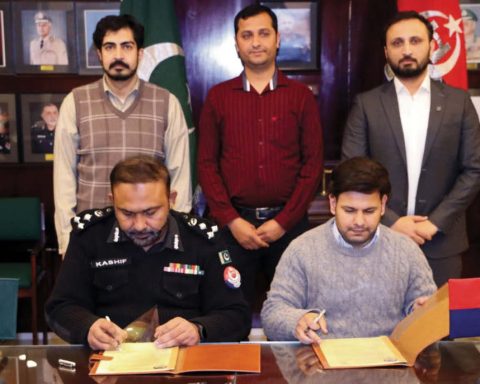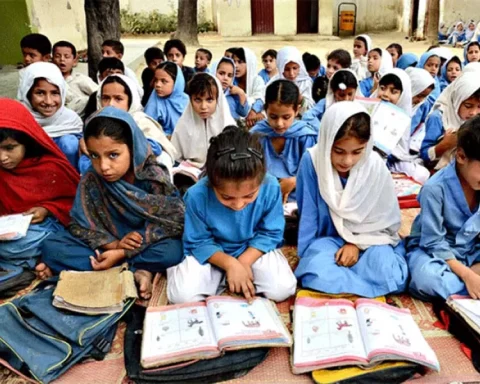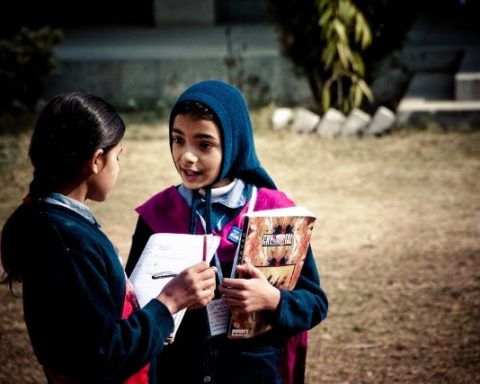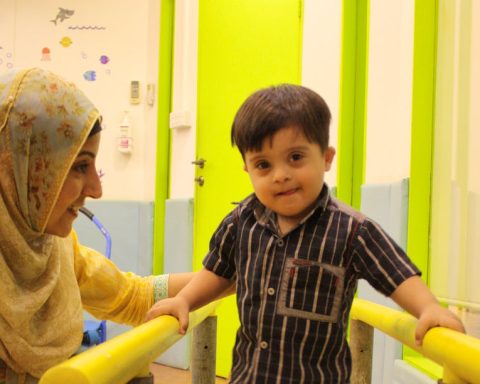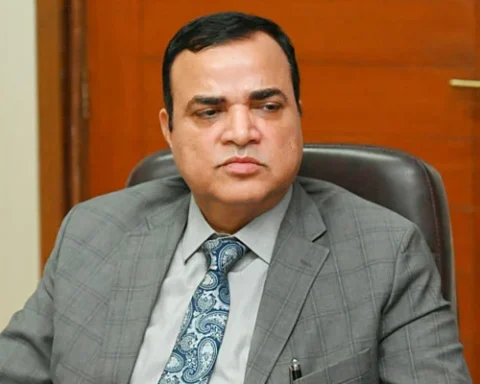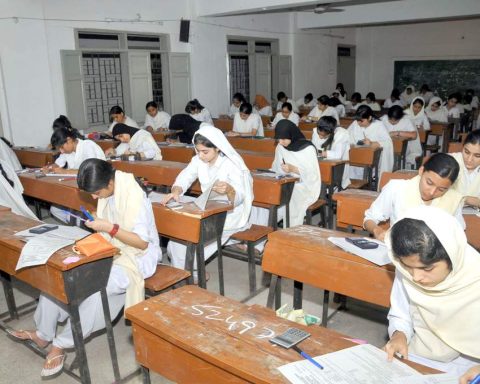Introduction
Education is a fundamental human right that empowers individuals and communities, fosters economic growth and contributes to sustainable development. In Pakistan, education has always been a subject of great importance and debate as the country continues to grapple with significant challenges in its education system. Despite the progress made in recent years, there are still significant disparities in access to education, quality of teaching and learning outcomes in Pakistan.
Types of Education Systems in Pakistan
There are several types of education systems in Pakistan, including:
Formal Education System
The formal education system in Pakistan consists of six levels: pre-primary, primary, middle, secondary, higher secondary, and tertiary education.
Pre-Primary Education
Pre-primary education in Pakistan is for children aged three to five years. It is not compulsory, but many parents choose to enroll their children in pre-primary schools to prepare them for primary education. Pre-primary education aims to promote the physical, social, emotional, and cognitive development of children.
Primary Education
Primary education in Pakistan starts at the age of five and continues for five years. It is compulsory, and children are required to attend school. The primary education curriculum includes basic subjects such as Urdu, English, mathematics, science, social studies, and Islamic studies.
Middle Education
After completing primary education, students move to middle school, which is also known as junior high. Middle education continues for three years and includes subjects such as English, Urdu, mathematics, science, social studies, and Islamic studies.
Secondary Education/ Matriculation
Secondary education in Pakistan starts after completing middle school and continues for two years. Students can choose from several streams, such as science, arts, or commerce. The secondary education curriculum includes more specialized subjects such as physics, chemistry, biology, history, geography, and Islamic studies.
Higher Secondary Education
After completing secondary education, students can opt for higher secondary education, which is also known as intermediate education. Higher secondary education continues for two years and is a prerequisite for admission to undergraduate programs in universities. Students can choose from several streams such as pre-engineering, pre-medical, humanities, and commerce.
Tertiary Education
Tertiary education in Pakistan is provided by universities and colleges. Students can enroll in undergraduate, graduate, or postgraduate programs in various fields such as engineering, medicine, law, business, and humanities.
O and A Level Education in Pakistan
O and A level education in Pakistan is a part of the formal education system and is offered by the Cambridge Assessment International Education (CAIE). The O level is equivalent to the secondary school education in Pakistan, while the A level is equivalent to higher secondary education. The O and A level education system follows a different curriculum than the one offered by Pakistani boards of education. It is an internationally recognized qualification that provides students with a broad and balanced education. O and A level students have the flexibility to choose from a wide range of subjects, including sciences, humanities, and business studies. O and A level education in Pakistan is mostly offered by private schools, and it is an expensive form of education compared to the Pakistani education system. The O and A level qualifications have acceptability world-wide.
Religious Education System
Religious education is a parallel education system that exists alongside the formal education system. It focuses primarily on Islamic studies and is based on the teachings of the Qur’an and the Hadith. Religious education is provided in madrassas, some of which are residential and most of which do not charge tuition fees. The curriculum of madrassas in Pakistan includes subjects such as Arabic, Islamic Studies, Quranic Studies, Hadith, Fiqh (Islamic Law) and Islamic History.
Many madrassas are not regulated by the Pakistani government. In recent years, the Pakistani government has taken steps to regulate madrassas and bring them under its purview. The government has introduced some reforms to modernise the curriculum of madrassas and integrate madrassas into the regular education system.
Distance Learning System
Distance learning, also known as online or e-learning, is a growing form of education in Pakistan, especially after COVID -19. It offers students who are unable to attend traditional classrooms for various reasons the opportunity to continue their education. Distance learning is offered in Pakistan by various institutions, including universities, colleges and private education providers. The studies are designed to be accessible to students regardless of their geographical location. They can be attended via the internet, by correspondence or through multimedia platforms.
Single National Curriculum (SNC) / National Curriculum of Pakistan (NCP)
Single National Curriculum (SNC) is the name given to a system in which all students in Pakistan receive a uniform education in all aspects. The aim is to minimise educational disparities between public or government schools, public schools and madaris so that every individual is given equal opportunities under the state education system. According to the Ministry of Federal Education and Professional Training, the development of this curriculum is driven by important considerations such as. the teachings of the Quran and Sunnah, the constitutional framework, national policies, aspirations and standards, alignment with SDG 4 goals and targets, the vision of Quaid and Iqbal, focus on values, life skills-based and inclusive education, respect and appreciation of different cultures and religions in the local and global context, focus on project, inquiry and action-based learning, development of 21st century skills including analytical, critical and creative thinking.
The Single National Curriculum is being implemented in three phases:
- Phase I: SNC and textbooks Pre I-V (Academic Year 2021-22)
- Phase II: SNC and textbooks VI-VIII (Academic Year 2022-23)
- Phase III: SNC and textbooks IX-XII (Academic Year 2023-24)
The Federal Ministry of Education renamed the Single National Curriculum (SNC) to National Curriculum of Pakistan (NCP) in 2022.
Data on Education in Pakistan
PSLM data on education is one of the most reliable data sources for monitoring progress in education. It provides a wide range of key indicators for all provinces and districts, disaggregated by region and gender. It is also one of the most important sources for monitoring the SDGs (the successor to the MDGs). Five education indicators under Goal 4 are calculated using PSLM data.
School Attendance
In 2019-20, the proportion of the population aged ten years and above who had ever attended school in Pakistan was 60%, a decline from 62% in 2014-15. There was a declining trend in both urban and rural areas. in 2019-20, the percentages were 73% and 52%, respectively, compared to 77% and 52% in 2014-15. Provincial data shows that Punjab has the highest percentage of the population that has attended school at 66% in 2019-20, followed by Khyber Pakhtunkhwa (excluding merged areas) at 56%. Conversely, Balochistan is at the bottom with 44%, and the percentage is higher among males (70%) than females (50%). Islamabad, the capital, has the highest percentage of the population that has ever attended school at 85%. Among the districts, Rawalpindi, Korangi, Abbottabad and Pishin top their respective provinces with percentages ranging from 59% to 83%. Thatta, Mohmand, Dera Bugti, Shaheed Sikandarabad and Sherani are at the bottom in their respective provinces, with percentages ranging from 14% to 40%.
Completed Primary Level or higher
Nationally, the percentage of the population that has completed primary or higher education has declined slightly. In 2019-20, the figure was 51%, compared to 52% in 2014-15. The decline was more pronounced in urban areas, where the percentage fell from 68% to 65%, while in rural areas it remained stagnant at 42%. The gender comparison showed that in 2019-20, the completion rate of primary or higher was higher for males at 60 per cent compared to 42% for females.
Comparing provinces, Punjab had the highest proportion of population with completed primary or higher education at 56% in 2019-20, compared to 54% in 2014-15. Sindh recorded a decline from 53% to 49% in 2019-20, while Khyber Pakhtunkhwa recorded a slight decline from 44% to 43% during the same period. Balochistan had the lowest proportion of population with primary education or above at 36% in 2019-20, down from 35% in 2014-15, but Islamabad saw an increasing trend, with the proportion rising by 2 percentage points to 79% in 2019-20.
In terms of districts, Rawalpindi, Korangi, Abbottabad and Gwadar were the best performing districts in their respective provinces with completion rates of 74%, 76%, 65% and 53% respectively. Rajanpur, Thatta, Mohmand, Bajur and Dera Bugti, on the other hand, were among the worst performing districts, with graduation rates ranging from 8% to 30%.
Out of School Children
Pakistan is among the top three countries in the world with the highest number of children out of school. The PSLM survey, which takes into account children aged 5 to 16 who have never attended school or left school early, shows that the national percentage of out-of- school children was 32% in 2019-20. The survey shows that children who are out of school are more common in rural areas (37% compared to 22% in urban areas). At the provincial level, Punjab has the lowest percentage of children out of school at 24%, while Balochistan has the highest at 47%.
A comparison by district shows that almost two-thirds of the districts in Punjab have less than 25% of children out of school, while Rajanpur has the highest percentage of children out of school at 48%. Conversely, Chakwal and Narowal have the lowest percentage of children out of school at 9%. In Sindh, Thatta has the highest percentage of children out of school at 71%, while Karachi Central has the lowest at 21%. In Khyber Pakhtunkhwa, Mohmand has the highest percentage of out-of-school children at 57%, while Abbottabad has the lowest at 9%. Finally, in Balochistan, Shaheed Sikandarabad has the highest percentage of children out of school at 76%, while Nushki has the lowest percentage of children out of school at less than 25%.
Reasons for Leaving School before completing Primary level
The findings of the PSLM District Level Survey 2019-20 show that the main reason for dropping out of education before completing primary education among children aged 5-16 years is the child’s lack of willingness, accounting for 36% of the responses. The second most frequently cited reason is the high cost of education, which was cited as a factor by 15% of respondents. In addition, 10% of child respondents said they had to work, while 9% said their parents did not agree with their education. Finally, “distance to school” and “perceived lack of usefulness of education” were the least frequently mentioned reasons, each accounting for only 4 and 2% of responses, respectively.
Enrolment Rates
Enrolment rates are calculated through Net Enrolment Ratio (NER) and Gross Enrolment Ratio (GER) using different age groups.Net Enrolment Ratio (NER) is a measure used in education to determine the percentage of children of a specific age group who are enrolled in a certain level of education. It is calculated by dividing the number of children enrolled in a specific level of education by the total number of children of the same age group in a given population. Gross Enrolment Ratio (GER), on the other hand, is a measure of the total number of students enrolled in a specific level of education, regardless of age, expressed as a percentage of the eligible official school-age population corresponding to the same level of education in a given school year. In other words, it is the percentage of students in a particular age group who are enrolled in a certain level of education, such as primary, secondary or tertiary. The PSLM data takes into account the age group “6-10” “for primary education, “11-13″ for middle school and ” 14-15″ for Matric.
Gross Enrolment Ratio at Primary Level
In the 2019-20, the Gross Enrolment Ratio (GER) for ages 6 to 10 nationally, excluding Katchi, was 84 percent. This is down from 91 percent in 2014-15. Regional comparisons indicate a declining trend in both urban and rural areas, with GER at 91 percent and 81 percent, respectively, in 2019-20, compared to 103 percent and 85 percent in 2014-15. Among the provinces, Punjab had the highest GER with 92 percent in 2019-20, followed by Khyber Pakhtunkhwa (including merged areas) with 85 percent, while Sindh had the lowest GER with 71 percent in 2019-20, down from 79 percent in 2014-15. Comparing districts, Jhelum, Layyah, and Sialkot topped their respective provinces with a GER of 109 percent, Karachi Central and South with 89 percent, and Abbottabad and Gwadar with 104 percent. Conversely, Rajanpur, Kashmore, Mohmand and Sherani were the worst performing districts in their respective provinces with GERs of 64 percent, 44 percent, 52 percent and 42 percent, respectively.
When examining the age group (5-9) years, a similar trend can be observed. In the academic year 2019-20, the GER at the primary level (excluding Katchi class) was 82%, a decline from 89% in 2014-15. However, a comparison across provinces shows that every province recorded a significant decline in 2019-20. Punjab declined from 97% in 2014-15 to 90% in 2019-20, Sindh from 79% to 67%, Khyber Pakhtunkhwa from 90% to 83% and Balochistan from 71% to 70%.
The GER in primary school age (4-9) including Katchi was 87% in 2019-20 compared to 93% in 2014-15. Punjab had the highest ratio of 100%, followed by Khyber Pakhtunkhwa with 85%, and Balochistan had the lowest with 65%.
The GER for government primary schools for the age group (5-9) by province and district (excluding Katchi class) has shown a decline from 55% in 2014-15 to 52% in 2019-20. The regional analysis also shows a decline in both urban and rural areas from 43% in 2014-15 to 40% in 2019-20 and from 60% in 2014-15 to 58% in 2019-20 respectively. Thus, a comparison across provinces shows an overall declining trend GER for government primary schools. In Punjab, the rate declined from 54% in 2014-15 to 53% in 2019-20, in Sindh from 50% in 2014-15 to 42% in 2019-20, in Khyber Pakhtunkhwa from 62% in 2014-15 to 60% in 2019-20, and in Balochistan from 64% in 2014-15 to 59% in 2019-20.
A district-wise analysis also shows that in Punjab, Layyah has the highest GER at 84%, while Lahore has the lowest GER at 34%. In Sindh, Shaheed Benazirabad has the highest GER with 62%, while Korangi has the lowest GER with 16%. In Khyber Pakhtunkhwa, Karak has the highest GER with 79%, while Mohmand has the lowest GER with 36%. In Balochistan, Gwadar has the highest GER with 96%, while Sherani has the lowest GER with 21%.
Net Enrolment Ratio at Primary Level
For 2019-20, the Net Enrolment Ratio (NER) for primary school children aged 5-9 years was reported to be 51%, a decline from 57% in 2014-15. This pattern is observed in all four provinces and their respective districts. Moreover, the NER for primary school children aged 4-9 years, including katchi class, at the national level has been reported at 60% for 2019-20, a decline from 65% in 2014-15. Comparing provinces, Punjab has the highest NER at 70%, followed by Khyber Pakhtunkhwa (including merged areas) at 56%, while Balochistan has the lowest NER at 44%.
The NER in government primary schools for children aged 5-9 years, excluding Katchi class, has declined to 32% at the national level in 2019-20, a decline from 34% in 2014-15. Regional comparison also shows a declining trend in both urban and rural areas: 24% in 2019-20 compared to 26% in 2014-15 for urban areas and 36% in 2019-20 compared to 37% in 2014-15 for rural areas. However, when comparing provinces, Balochistan has the highest NER at 39%, followed by Khyber Pakhtunkhwa at 35% and Punjab at 32%. Conversely, Sindh has the lowest NER at 28%.
In the 2019-20 academic year, the percentage of primary school enrolment in government schools (excluding katchi) was 64%, up from 62% in 2014-15. At the provincial level, Balochistan had the highest enrolment rate at 83%, followed by Khyber Pakhtunkhwa at 72%, while Punjab had the lowest enrolment rate at 59%.
However, a comparison of districts shows that in Punjab, Bhakkar district has the highest enrolment rate of 81%, while Lahore district has the lowest rate of 38%. In Sindh, Sujawal district has the highest enrolment rate of 97%, while Korangi district has the lowest rate of 20%. In Khyber Pakhtunkhwa, Kohistan district has the highest enrolment rate at 98%, while Peshawar district has the lowest rate at 47%. In Balochistan, Awaran and Shaheed Sikandarabad districts have the highest enrolment rate at 100%, while Quetta district has the lowest rate at 69%.
Gross Enrolment Ratio (GER) at Middle Level
In the academic year 2019-20, the Gross Enrolment Ratio (GER) for middle school students (ages 11-13 ) in Pakistan has increased to 63% from 62% in 2014-15. There was a declining trend in both urban and rural areas. The enrolment rates were 73% and 57% respectively in 2019-20, compared to 78% and 55% in the previous period.
Except Punjab, all provinces showed a declining trend in enrolment rates. Khyber Pakhtunkhwa (excluding merged areas) had the highest rate of 70% in 2019-20, followed by Punjab and Khyber Pakhtunkhwa (including merged areas) with 67%. However, Balochistan had the lowest rate at 47% in 2019-20. Comparing districts, Jhelum in Punjab, Korangi in Sindh, Chitral and Haripur in Khyber Pakhtunkhwa and Nushki in Balochistan topped the list with enrolment rates between 85 and 99%. In contrast, Muzaffargarh and Rajanpur in Punjab, Thatta in Sindh, Kohistan in Khyber Pakhtunkhwa and Shaheed Sikandarabad in Balochistan were the lowest ranked districts with enrolment rates between 7 and 42%.
Moreover, the GER for middle school students (ages 10-12) in Pakistan as a whole increased from 55% in 2014-15 to 56% in 2019-20.
Net Enrolment Ratio (NER) at Middle Level
The Net Enrolment Ratio (NER) for middle school students (ages 11-13) stagnated at 37% at the national level in 2019-20, the same as in 2014-15.
However, a provincial comparison shows that Punjab had the highest rate of 41% in 2019-20, compared to 38% in 2014-15. Khyber Pakhtunkhwa (excluding merged areas) had a rate of 40% in 2019-20, while Sindh had a rate of 32%. Balochistan had the lowest rate of 26%, which remained the same as in 2014-15. A comparison by district showed that Jhelum in Punjab, Korangi in Sindh, Haripur, Chitral and Karak in Khyber Pakhtunkhwa and Mastung in Balochistan performed the best with enrolment rates ranging from 52 to 63%. In contrast, Muzaffargarh, Thatta, Kohistan and Shaheed Sikandarabad were the districts with the lowest enrolment rates, ranging from 3 to 24%.
The net enrolment rate for middle school students (ages 10-12) showed a declining trend at the national level with a rate of 21% in 2019-20 compared to 22% in 2014-15. Punjab had the highest rate at 25%, followed by Khyber Pakhtunkhwa at 19% and Balochistan at 15%, the lowest rate. A comparison by district showed that Jhelum in Punjab, Korangi in Sindh, Haripur in Khyber Pakhtunkhwa and Duki in Balochistan performed the best with enrolment rates ranging from 30 to 38%. Muzaffargarh, Thatta, Kohistan and Shaheed Sikandarabad were the districts with the lowest enrolment rates, ranging from 2 to 15%.
Gross Enrolment Ratio (GER) at Matriculation Level
The Gross Enrolment Ratio (GER) for Matriculation (ages 14-15) declined from 58% in 2014-15 at the national level to 57% in 2019-20. However, the decline is more pronounced in urban areas with a fall from 78% to 76% in 2019-20, while rural areas remain unchanged at 47% during the same period. Punjab tops all provinces with 65% GER in 2019-20 compared to 63% in 2014-15, followed by Khyber Pakhtunkhwa including merged areas with 53% GER in 2019-20 compared to 55% in 2014-15. However, Khyber Pakhtunkhwa excluding merged areas has a figure of 56% GER, while Balochistan brings up the rear with a GER of 36% in 2019-20 compared to 39% in 2014-15.
A comparison by district shows that Chakwal in Punjab has the highest GER at 95% while Muzaffargarh has the lowest at 35%. In Sindh, Karachi East & Korangi have the highest GER with 87% while Thatta has the lowest with 14%. In KP, Chitral has the highest GER with 96% while Kohistan has the lowest with 16%. Also, Nushki district in Balochistan has the highest GER with 74% and Shaheed Sikandarabad has the lowest with 2%.
The GER for Matriculation (ages 13-14) by province and district at the national level has also declined from 59% in 2014-15 to 58% in 2019-20. This pattern is observed in both urban and rural areas at the national level as well as when comparing provinces and districts.
NET Enrolment Ratio (NER) at Matriculation Level
At the national level, the Net Enrolment Ratio (NER) for Matriculation (ages 14-15) stagnated at 27% in 2019-20, as it did in 2014-15. However, comparing regions, urban areas show a declining trend with 38% in 2019-20 as compared to 35% in 2014-15, while rural areas show a slight increase with 22% in 2019-20 as compared to 21% in 2014-15.
Among the provinces, Punjab has the highest NER at 30%, but it too shows a declining trend in 2019-20 compared to 29% in 2014-15. Khyber Pakhtunkhwa (excluding Merged Areas) is stagnant at 27% in both 2019-20 and 2014-15, while Sindh shows a declining trend at 22% in 2019-20 compared to 25% in 2014-15. Balochistan has the lowest NER at 14% in 2019-20 compared to 15% in 2014-15.
Comparing districts, Chakwal in Punjab with 49%, Korangi in Sindh with 40%, Haripur in KP with 44% and Mastung in Balochistan with 28% have the highest NERs while Muzaffargarh with 14%, Thatta with 3%, Kohistan with 4% and Shaheed Sikandarabad and Sherani with 0% have the lowest NERs in their respective provinces.
The NER at matric level ( ages 13-14) shows a decline with 13% in 2019-20 compared to 14% in 2014-15 at the national level. When comparing provinces and districts, the same pattern is observed and there is no change when comparing with different age groups.
Literacy
Literacy rate is an important indicator of education that strongly influences the development of a country. The national literacy rate for people aged 10 and above has not changed and is stagnant at 60% in 2019-20, the same as in 2014-15.
The literacy rate has declined in urban areas, from 76% in 2014-15 to 74% in 2019-20, but in rural areas the literacy rate has increased from 51% in 2014-15 to 52% in 2019-20. The male literacy rate continues to be higher than the female literacy rate, at 70% compared to 49%.
As far as provinces are concerned, Punjab has the highest literacy rate among all provinces in 2019-20 at 64% as compared to 63% in 2014-15. Sindh has a literacy rate of 58% in 2019-20 as compared to 60% in 2014-15, while Balochistan has the lowest literacy rate of 46% in 2019-20 as compared to 44% in 2014-15. It is noteworthy that Punjab and Balochistan show an increasing trend in literacy in 2019-20, while Sindh and Khyber Pakhtunkhwa show a decreasing trend.
The literacy rate in the capital Islamabad is the highest in the country at 85%. However, a comparison of districts shows that Rawalpindi with 82%, Korangi with 84%, Abbottabad with 74% and Quetta with 64% are the best districts in their respective provinces. On the other hand, Rajanpur with 42%, Tharparkar with 29%, Mohmand with 26% and Dera Bugti and Khuzdar with 22% are the lowest rated districts in their respective provinces.
Youth Literacy
The literacy of the youth population aged 15 to 24 years was calculated for the first time in the PSLM District Survey 2019-20. The results show that the national youth literacy rate is 72%, with a higher rate of 84% in urban areas compared to 65% in rural areas. However, the literacy rate is higher among male youths at 79% compared to female youths at 65%. Among the provinces, Punjab has the highest adolescent literacy rate at 78%, followed by Khyber Pakhtunkhwa at 67%, while Balochistan has the lowest rate at 57%. In Islamabad, the literacy rate among youth is 93%.
However, a comparison of districts shows that Narowal and Sialkot with 93%, Korangi with 92%, Abbottabad with 95%, Pishin and Quetta with 76% have the highest rates in their respective provinces. On the other hand, Rajanpur with 52%, Kashmore with 31%, Mohmand with 30% and Shaheed Sikandarabad with 11% have the lowest rates in their respective provinces.
Adult Literacy
The adult literacy rate stagnated at 57% in 2019-20 compared to 2014-15. In urban areas, there is a decrease of 2%: 72% in 2019-20 compared to 74% in 2014-15. However, in rural areas, there is an increase, with a rate of 48% in 2019-20 compared to 46% in 2014-15. The percentage of male adults with a literacy rate is higher at 68% compared to 46% for female adults. Among the provinces, Punjab has the highest rate at 61% in 2019-20 compared to 60% in 2014-15, followed by Sindh at 57% compared to 58% in 2014-15. Khyber Pakhtunkhwa also shows an increasing trend with a rate of 49% in 2019-20 compared to 47% in 2014-15. Balochistan, on the other hand, has the lowest rate at 44% in 2019-20 compared to 38% in 2014-15.
In Islamabad, the adult literacy rate is 84%. A comparison of districts shows that Rawalpindi with 80%, Korangi with 83%, Abbottabad with 71% and Quetta with 63% have the highest rates in their respective provinces. On the other hand, Rajanpur with 37%, Tharparkar with 26%, Mohmand with 20% and Shaheed Sikandarabad with 11% are the districts with the lowest rates in their respective provinces.
Educational Expenditure
According to the Economic Survey of Pakistan 2020-21, Pakistan only spent 1.5% of its budget on education in year 2019-20 much lower than previous years due to closure of educational institutes amid country-wide lockdown and decrease in current expenditures (other than salaries) due to COVID-19 Pandemic. Furthermore, as a result of COVID-19 crisis, there was an increase in expenditure of other Social Sectors i.e., health, natural calamities & other disasters, Benazir Income Support Programme, Pakistan Bait-ul-Maal etc.
Yearly Comparison of Educational Expenditures as % of GDP
| Expenditures on Education | |
| Year | As % of GDP |
| 2015-16 | 2.3% |
| 2016-17 | 2.2% |
| 2017-18 | 2.4% |
| 2018-19 | 2.3% |
| 2019-20 (P) | 1.5% |
Source: Economic Survey of Pakistan 2020-21
National and Provincial Government Expenditures on Education in YEAR 2018-19 and 2019-20
| Year 2018-19 (in Millions) | ||||||
| Federal | Punjab | Sindh | KP | Balochistan | Pakistan | |
| Current | 103,787 | 339,402 | 153,492 | 132,516 | 49,298 | 778,495 |
| Development | 21,780 | 32,413 | 9,110 | 20,195 | 6,029 | 89,527 |
| Total | 125,567 | 371,815 | 162,602 | 152,711 | 55,327 | 868,022 |
| Year 2019-20 (P) (in Millions) | ||||||
| Current | 83,266 | 182,616 | 165,028 | 28,161 | 53,640 | 512,711 |
| Development | 31,300 | 35,378 | 5,427 | 18,088 | 8,111 | 98,304 |
| Total | 114,566 | 217,994 | 170,455 | 46,249 | 61,751 | 611,015 |
Source: Economic Survey of Pakistan 2020-21
International Legal Framework on Education
Universal Declaration of Human Rights (UDHR), 1948
The Universal Declaration of Human Rights (UDHR) was adopted by the United Nations General Assembly in 1948 and is considered a fundamental document in the field of human rights. Article 26 of the UDHR states the following:
“Everyone has the right to education. Education shall be free at least in the elementary and fundamental stages. Elementary education shall be compulsory. Technical and professional education shall be made generally available and higher education shall be equally accessible to all on the basis of merit.”
This article recognises education as a fundamental right that should be accessible to everyone without any discrimination. The article also states that education should be free, at least at the primary and elementary levels, and that primary education should be compulsory.
International Covenant on Economic, Social and Cultural Rights (ICESCR), 1966
The International Covenant on Economic, Social and Cultural Rights (ICESCR) is a multilateral treaty adopted by the United Nations General Assembly in 1966. The ICESCR recognises education as a fundamental right and requires Parties to take measures to ensure that education is accessible and available to all, including children. It requires that primary education be compulsory and free for all, and that secondary and tertiary education be made universally accessible and progressively free. The Covenant also calls for the development of a school system at all levels and adequate support for teaching staff. In addition, the Covenant recognises the right of parents to choose schools for their children that meet minimum education standards and to ensure that their children receive a religious and moral education in accordance with their own beliefs. Pakistan ratified ICESCR on April 17, 2008.
UN Convention on the Rights of Child (UNCRC), 1989
The UN Convention on the Rights of the Child includes 54 articles covering a wide range of rights for children, including the right to education. Pakistan ratified the Convention in 1990.
Article 28 of the UNCRC recognises the right of every child to education. It states that every child has the right to access primary education and that every child should be provided with access to secondary education, including vocational training and higher education. The article emphasises that education should be accessible to all children, regardless of their gender, race or economic situation.
In addition to the right to education, the UNCRC also addresses the quality of education. Article 29 of the UNCRC describes the goals of education, which include the development of a child’s personality, talents and mental and physical abilities. It also emphasises that education should prepare children to live responsibly and with respect for human rights, cultural diversity and the environment.
National Legal Framework on Education
Constitution of Pakistan, 1973
The Constitution of the Islamic Republic of Pakistan, also known as the 1973 Constitution, is the supreme law of Pakistan. Chapter 1 deals with fundamental rights.
Article 25A of the Constitution of Pakistan states: “The State shall provide free and compulsory education to all children of the age of five to sixteen years in such a manner as may be determined by law.”
This article was added by the 18th Amendment to the Constitution in 2010 and makes education a fundamental right for every child in Pakistan. It aims to ensure that every child in the country has access to education, regardless of their socio-economic background. Furthermore, the article places the responsibility for the provision of education on the state, which includes both the federal and provincial governments. It obliges the state to take all necessary measures to ensure that every child receives a quality education, regardless of their gender, ethnicity, religion or any other factor.
Chapter 2 of the Constitution of Pakistan 1973 deals with the principles of policy. Article 37 deals with the “Promotion of Social Justice and Eradication of Social Evils” and provides that the state shall –
(a) promote, with special care, the educational and economic interests of backward classes or areas;
(b) remove illiteracy and provide free and compulsory secondary education within minimum possible period;
(c) make technical and professional education generally available and higher education equally accessible to all on the basis of merit.
Article 38, which deals with “Promotion of social and economic well-being of the people”, provides in sub-article (d) the state shall provide basic necessities of life, such as food, clothing, housing, education and medical relief, for all such citizens, irrespective of sex, caste, creed or race, as are permanently or temporarily unable to earn their livelihood on account of infirmity, sickness or unemployment.
Right to Free & Compulsory Education Act, 2012 (Islamabad Capital Territory)
The Right to Free & Compulsory Education Act, 2012 is a law in Pakistan that guarantees the right to free and compulsory education for all children between the ages of 5 and 16 in Islamabad Capital Territory. The act also requires the government to establish and maintain schools in every neighbourhood and to ensure that all children have equal access to education regardless of their social or economic background. The act also provides for the appointment of trained teachers, the provision of textbooks and other instructional materials, and the establishment of a system for the evaluation of students. The act also includes provisions for the protection of the rights of children with disabilities, and for the elimination of discrimination in education. The act also gives the right to the parents to have their children educated in the medium of instruction of their choice (either in Urdu or the regional language). However, despite the existence of this law, access to education in Pakistan remains a challenge in many areas, especially for girls, marginalised communities and children living in rural or conflict-affected areas.
Sindh Right to Free and Compulsory Education Act, 2013
The Sindh Right to Free and Compulsory Education Act, 2013 is a law in the Sindh province of Pakistan that guarantees the right to free and compulsory education for all children aged 5 to 16 years in the province. The act requires all children in this age group to attend school and makes it mandatory for the government to provide free education to all children in the province. The act also establishes the Sindh Education Foundation to manage and oversee the implementation of the act and to ensure that all children have access to quality education. The act also provides for the establishment of a monitoring and evaluation system to ensure that schools are providing quality education and that students are achieving the desired learning outcomes. Additionally, the act also includes provisions for the promotion of education in the mother tongue.
Balochistan Compulsory Education Act, 2014
The Balochistan Compulsory Education Act, 2014 is a law passed by the government of the Pakistani province of Balochistan, which makes primary education compulsory for all children between the ages of 5 and 16. The law also requires parents and guardians to ensure that their children are enrolled in school and attend regularly. The Act was passed in order to improve literacy rates and increase access to education in the province, which has historically had low levels of enrollment and high dropout rates. The government has also established a system of fines and penalties for parents who do not comply with the law.
Punjab Free and Compulsory Education Act, 2014
The Punjab Free and Compulsory Education Act, 2014 is a law in the Pakistani province of Punjab which aims to provide free and compulsory education to all children between the ages of 5 and 16. The Act makes it the legal responsibility of parents to ensure that their children are enrolled in and attend school, and also provides for the establishment of a monitoring and enforcement mechanism to ensure compliance with this requirement. The Act also provides for the establishment of a fund to support the education of children from disadvantaged backgrounds, and for the appointment of education officers to oversee the implementation of the Act. The Act also includes provisions for the punishment of parents who fail to comply with their legal obligation to ensure their children’s education. The Act was passed to fulfill the constitutional obligation of providing free and compulsory education to every child in Pakistan.
Khyber Pakhtunkhwa Free Compulsory Primary and Secondary Education Act, 2017
The Khyber Pakhtunkhwa Free Compulsory Primary and Secondary Education Act, 2017 is a law passed in the Khyber Pakhtunkhwa province of Pakistan that guarantees free and compulsory primary and secondary education for children between the ages of 5 and 16. The law requires that all children in the province attend school and imposes penalties on parents who fail to do so. The Act also provides the provision of free textbooks, uniforms, and transportation to school for children from low-income families. The law also include the provision of punishment for those who violate this act.
Khyber Pakhtunkhwa School Bags (Limitation of Weight) Act, 2020
The Khyber Pakhtunkhwa School Bags (Limitation of Weight) Act, 2020 is a law passed in the Khyber Pakhtunkhwa province of Pakistan that regulates the weight of school bags for students in the province. The act sets a maximum weight limit for school bags based on the grade level of the student, with the goal of reducing the physical strain on children caused by carrying heavy bags to and from school. The act also directs the schools to ensure that the students are not carrying excessive weight and also to provide lockers for the students. The Act also provides for penalties for violators of the law, including fines and imprisonment. This act is meant to protect the physical and mental health of students by limiting the weight of the bags they are required to carry to school.
Key Challenges and Problems of Education Sector in Pakistan
The education system in Pakistan faces numerous challenges that hinder the progress and development of the country. Some of the major issues affecting Pakistan’s education faces are:
Poor Infrastructure
One of the significant challenges that Pakistan’s education system faces is poor infrastructure. Many schools lack proper facilities such as electricity, clean drinking water, and functional toilets. In some rural areas, students have to travel long distances to reach their schools, which makes it difficult for them to attend regularly. The lack of infrastructure in schools negatively impacts the quality of education provided, and students often drop out of school due to these issues.
Article 25A and Compulsory Education Laws are Not Enforced
Education is compulsory in Pakistan for all children between the ages of five and 16, or until “matric’ in Pakistan. This is a fundamental right enshrined in Article 25 A of the Constitution of Pakistan. Participation in compulsory education is far from universal, especially in socio-economically disadvantaged regions, which is clearly reflected in enrolment rates.
Low Enrolment Rates
Another significant challenge in Pakistan’s education system is the low enrolment rates. The country has an estimated 22.8 million children out of school, which is the second-highest number in the world. Poverty, cultural beliefs, and social norms are some of the reasons why parents do not send their children to school. The lack of access to education in remote areas and inadequate facilities in schools also contribute to low enrolment rates. Children who do not receive an education are more likely to live in poverty and suffer from poor health and nutrition.
Gender Inequality
Gender inequality is a significant challenge in Pakistan’s education system. Girls’ enrolment rates are lower than boys, and they are more likely to drop out of school early. Cultural and religious beliefs often restrict girls’ access to education in many rural settings, and many families prefer to invest in boys’ education rather than girls. Moreover, there is a lack of female teachers, which makes it difficult for girls to receive an education in a safe and comfortable environment.
Poor Quality of Education
The quality of education provided in Pakistan is another significant challenge. Many schools lack qualified teachers, and those who are teaching often do not have the necessary skills to teach effectively. The curriculum is often referred to as outdated by education experts, and students are not taught critical thinking or problem-solving skills. The lack of resources and facilities in schools also contributes to poor quality education.
According to Aser 2021 survey, children’s learning levels in literacy (Urdu/Sindhi/Pashto) and numeracy declined in year 2020 compared to 2019. The learning outcomes in the higher grades show that there are still learning bottlenecks when children are not supported at a basic level in Grade 3. In ASER 2021, 15% of children in Grade 3 could read a story in Urdu/Sindhi/Pashto, compared to 18% in 2019. In Grade 5, 55% of children could read a story at Grade 2 level in Urdu/Sindhi/Pashto, compared to 59% in 2019. Similarly, in ASER 2021, 74% of Grade 8 children could read a story in Urdu/Sindhi/Pashto, compared to 86% in 2019. Children in classes 3, 5 and 8 also showed learning weaknesses in learning arithmetic. In ASER 2021, 20% of Grade 3 children were able to solve division at Grade 2 level compared to 21% in 2019. Also, 51% of Grade 5 children were able to solve division in 2021 compared to 57% in 2019. Similarly, 63% of Grade 8 children were able to solve division in 2021 compared to 65% in 2019.
Inadequate Teacher Training
Inadequate teacher training is another significant challenge that Pakistan’s education system faces. Teachers often lack the necessary training and skills to teach effectively. Teacher training programs are not standardised, and many teachers do not receive ongoing professional development. This lack of training and professional development negatively impacts the quality of education provided to students.
Lack of Funding
The education system in Pakistan is underfunded, which is a significant challenge. The government spends less than 2.5% of its GDP on education, which is far below the international standard of 4%. In year 2019-20, it was only 1.5%. This lack of funding negatively impacts the quality of education provided and contributes to poor infrastructure, low enrolment rates, and inadequate teacher training.
Lack of Uniformity
The education system is not uniform and is based on differentiated education systems such as public institutions, private institutions and Deeni Madaris. Polarisation in the education system has accelerated due to Pakistan’s divisive education system. This has penetrated the cultural veins of the nation. The polarised education system has further divided the society for political, economic and social reasons instead of uniting the people.
Socio-Economic Disparities
There are huge socio-economic disparities in Pakistan, not only between rural and urban areas, but also between the different provinces of the country. These inequalities have a major impact on educational outcomes, including wide disparities in access to education and overall educational attainment. While literacy rates are much higher in cities like Lahore, Islamabad and Karachi, they are extremely low in the “tribal areas” of Balochistan, Pakistan’s largest and poorest province.
Financial Burden on Parents
The ASER 2021 rural survey shows that the proportion of children from private schools taking tuition has remained at the same level (22%) as in 2019, but paid coaching has seen a massive increase for children in government schools from 6% in 2019 to 20% in 2021. These costs increase the economic burden on households at a time when 16% of households are facing income losses of more than 50%. For the poorest households, this means a huge loss of disposable income, and it is the poor children who are most likely to be enrolled in government schools.
